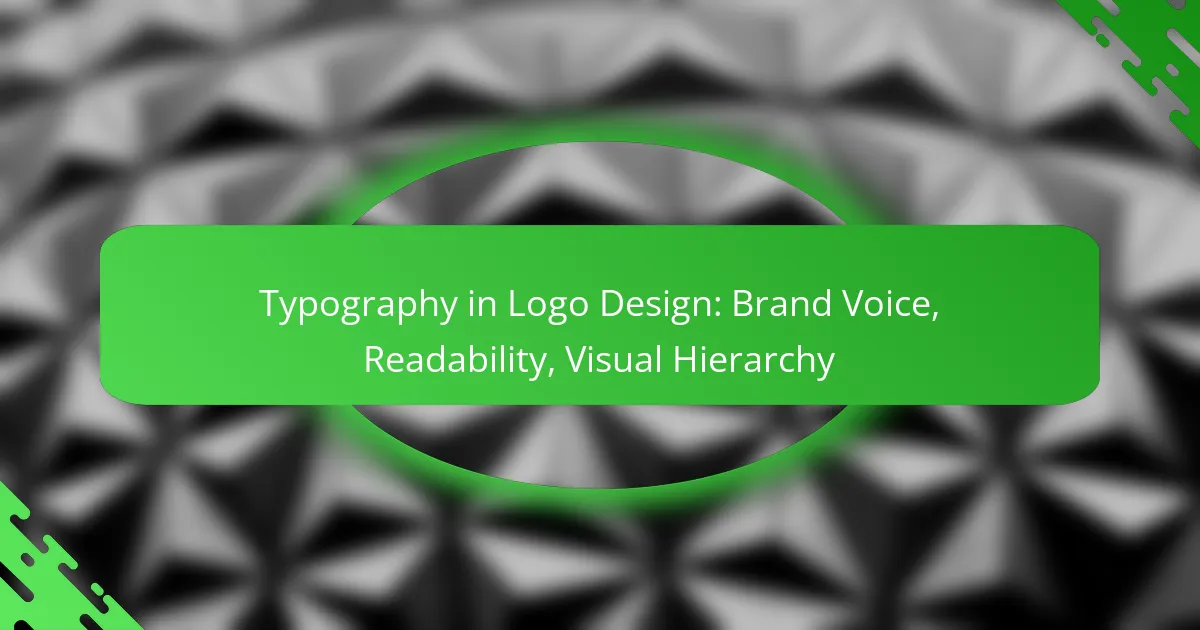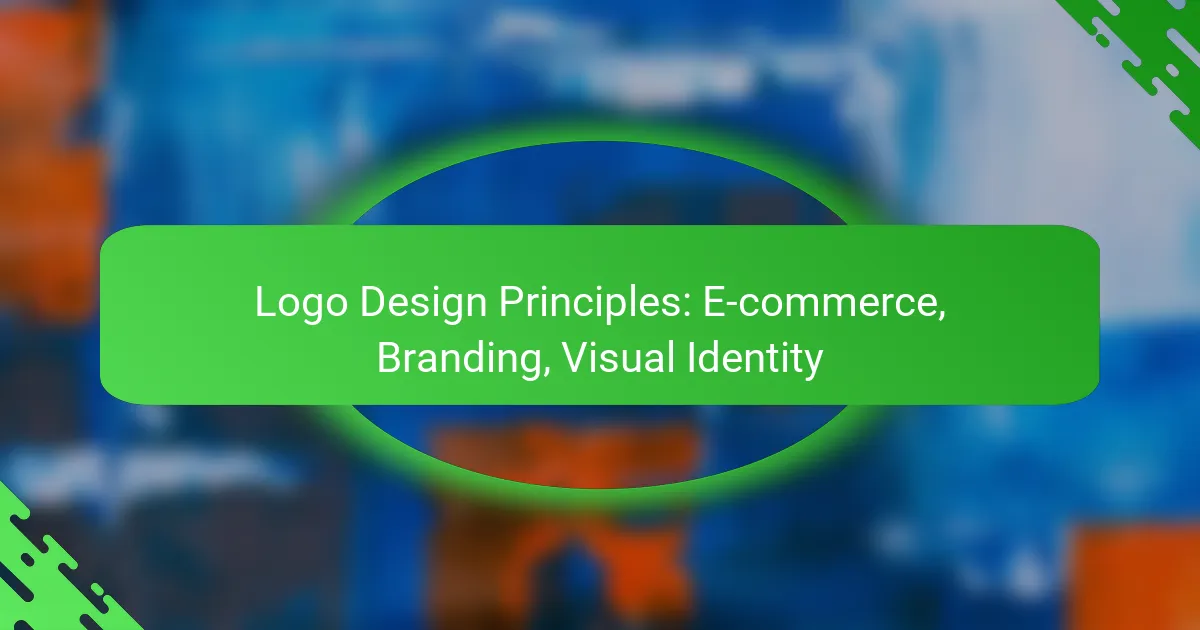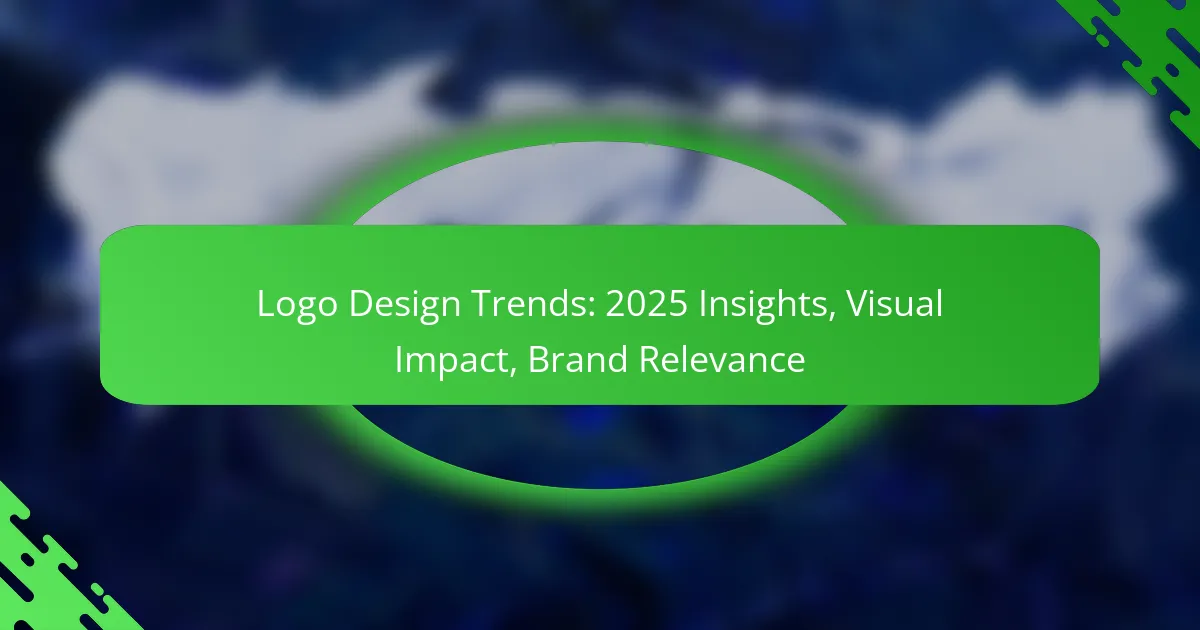Typography is a vital element in logo design, as it not only shapes a brand’s voice but also establishes emotional connections and influences audience perceptions. By carefully selecting typefaces that reflect brand values and enhance readability, designers can ensure that the logo communicates effectively. Additionally, employing visual hierarchy through font size and arrangement helps guide viewer attention and reinforces brand identity.

How does typography influence brand voice in logo design?
Typography plays a crucial role in shaping a brand’s voice through its logo design by conveying personality, establishing emotional connections, and influencing perceptions. The choice of typeface can signal the brand’s values and target audience, making it essential for effective branding.
Typography conveys brand personality
The typeface selected for a logo can communicate various aspects of a brand’s personality, such as being modern, traditional, playful, or serious. For instance, a sleek sans-serif font may suggest innovation and forward-thinking, while a classic serif font might evoke trust and reliability. Understanding the brand’s core attributes helps in choosing the right typography.
Consider the use of bold, rounded fonts for a friendly and approachable brand, versus sharp, angular fonts for a more aggressive or high-tech image. Each choice sends a message about who the brand is and what it stands for.
Font choice impacts emotional response
The emotional response elicited by a font can significantly affect how a brand is perceived. Research indicates that certain fonts can evoke feelings of calmness, excitement, or urgency. For example, softer, rounded fonts tend to create a sense of comfort, while bold, angular fonts can generate excitement or urgency.
When designing a logo, it’s important to consider the target audience’s emotional triggers. A brand targeting children might benefit from playful, colorful fonts, while a financial institution might opt for more conservative, stable-looking typefaces to instill confidence.
Case studies of successful brands
Many successful brands have effectively utilized typography to enhance their identity. For example, Coca-Cola’s iconic script font conveys a sense of nostalgia and tradition, aligning perfectly with its long-standing heritage. This choice reinforces the brand’s image as a classic beverage enjoyed by generations.
Another example is Google, which uses a clean, sans-serif font that reflects its commitment to simplicity and accessibility. This choice supports its brand voice of being user-friendly and innovative. Analyzing these case studies can provide valuable insights into how typography can shape brand voice and influence consumer perception.
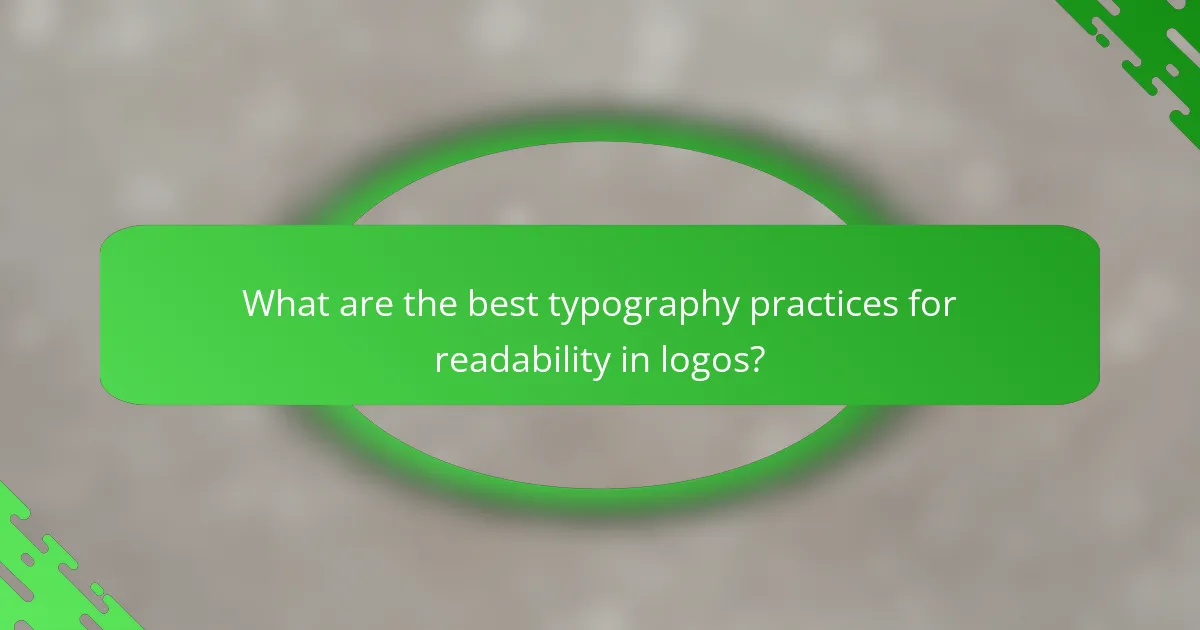
What are the best typography practices for readability in logos?
Effective typography in logo design enhances readability and ensures that the brand voice is clearly communicated. Key practices include selecting legible font styles, ensuring adequate contrast, and choosing optimal font sizes for visibility.
Use of legible font styles
Selecting legible font styles is crucial for logo readability. Sans-serif fonts often provide a clean and modern look, while serif fonts can convey tradition and reliability. Avoid overly decorative fonts that can hinder quick recognition.
Consider using bold or semi-bold weights to enhance visibility, especially at smaller sizes. Test different font styles in various contexts to ensure they remain clear across different media, from digital screens to printed materials.
Contrast and color considerations
High contrast between the text and background is essential for readability. Dark text on a light background or vice versa typically works best. Avoid color combinations that can be difficult to read, such as red on green or yellow on white.
Utilize color psychology to reinforce brand identity while maintaining legibility. For instance, blue often conveys trust, while orange can evoke enthusiasm. Always check how colors appear on different devices to ensure consistency.
Optimal font size for visibility
Choosing the right font size is vital for ensuring that logos are easily readable from a distance. A general guideline is to use a minimum font size of 12 points for print and 16 pixels for digital displays, adjusting as necessary based on the logo’s application.
Test your logo at various sizes to confirm its legibility in real-world scenarios. Remember that smaller text may become illegible when scaled down, so prioritize simplicity and clarity in your design choices.

How can visual hierarchy enhance logo effectiveness?
Visual hierarchy in logo design enhances effectiveness by guiding viewers’ attention and conveying brand identity clearly. By strategically using elements like font size, weight, and arrangement, a logo can communicate its message quickly and memorably.
Importance of font weight and size
Font weight and size play crucial roles in establishing visual hierarchy within a logo. Heavier weights can denote strength and stability, while lighter weights may suggest elegance or modernity. Generally, larger fonts attract more attention, making them ideal for brand names or key messages.
When selecting font sizes, consider the context in which the logo will be used. For instance, logos displayed on billboards should have larger text compared to those used on business cards. A good rule of thumb is to ensure that the main text is easily readable from a distance.
Arrangement of text elements
The arrangement of text elements significantly impacts how a logo is perceived. Placing the brand name prominently at the top or center can create a focal point, while secondary information can be positioned in smaller sizes or less prominent areas. This layout helps viewers quickly identify the brand.
Consider using alignment techniques to enhance clarity. For example, left-aligned text can create a sense of order, while centered text often feels more balanced. Experimenting with spacing between elements can also improve readability and visual appeal.
Examples of effective visual hierarchy
Many well-known logos exemplify effective visual hierarchy. For instance, the Coca-Cola logo uses a bold, flowing script that stands out against a simple background, making it instantly recognizable. The brand name is the focal point, with the tagline in a smaller font size beneath it.
Another example is the FedEx logo, which employs contrasting font weights to differentiate between “Fed” and “Ex.” This not only enhances readability but also reinforces brand identity. Such examples illustrate how thoughtful design choices can improve the overall effectiveness of a logo.
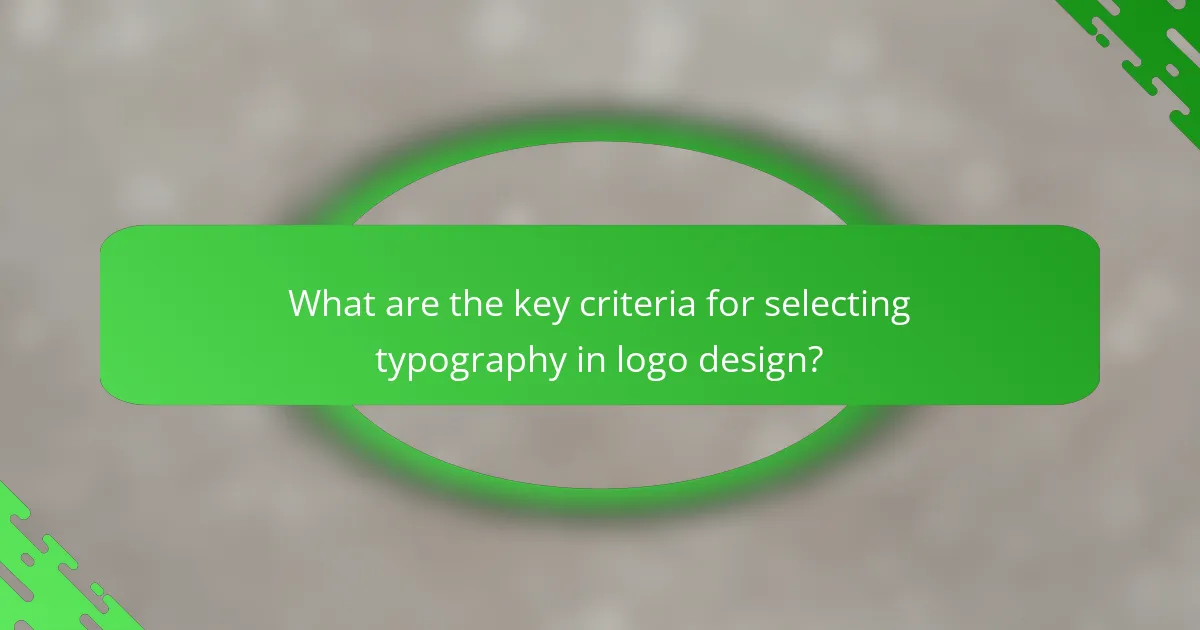
What are the key criteria for selecting typography in logo design?
Key criteria for selecting typography in logo design include brand alignment, target audience preferences, and industry-specific trends. Each of these factors plays a crucial role in ensuring that the logo effectively communicates the brand’s identity and resonates with its intended audience.
Brand alignment with typography
Typography should reflect the essence of the brand it represents. For example, a luxury brand might opt for elegant serif fonts to convey sophistication, while a tech startup may choose modern sans-serif fonts to suggest innovation. Consistency in font style across all branding materials reinforces brand identity.
Consider the personality traits of the brand when selecting typography. A playful brand might use rounded, whimsical fonts, while a serious brand may prefer more traditional, straightforward typefaces. This alignment helps create a cohesive brand voice that consumers can easily recognize.
Target audience preferences
Understanding the target audience is essential for effective typography selection. Different demographics may respond better to specific styles; for instance, younger audiences might prefer trendy, bold fonts, while older consumers may favor classic, readable typefaces. Conducting surveys or focus groups can provide valuable insights into audience preferences.
Additionally, consider cultural factors that may influence typography choices. Certain fonts may carry different connotations in various cultures, so it’s important to ensure that the typography resonates positively with the intended audience.
Industry-specific typography trends
Each industry often has its own typography trends that can influence logo design. For example, the fashion industry frequently utilizes elegant and artistic fonts, while the tech industry leans towards clean, minimalist designs. Staying informed about these trends can help a brand remain relevant and appealing.
Researching competitors can also provide insights into effective typography choices within a specific industry. However, while it’s beneficial to be aware of trends, brands should strive to maintain a unique identity that sets them apart from others in the same space.

How do typography trends evolve in logo design?
Typography trends in logo design evolve through shifts in cultural preferences, technological advancements, and the changing landscape of branding. Designers adapt typefaces to reflect contemporary aesthetics while ensuring they resonate with target audiences and maintain brand identity.
Current typography trends in 2023
In 2023, minimalism continues to dominate typography in logo design, with clean lines and simple fonts being favored for their clarity and modern appeal. Sans-serif typefaces are particularly popular, offering a sleek and approachable look that aligns with many brands’ voices.
Another trend is the use of variable fonts, which allow for flexibility in weight and style within a single typeface. This innovation enables brands to maintain consistency while adapting their logos for various applications, enhancing visual identity across platforms.
Impact of digital media on typography
Digital media has significantly influenced typography in logo design by prioritizing readability across various screen sizes and resolutions. Designers must consider how typefaces appear on mobile devices, leading to the preference for bolder, more legible fonts that stand out in digital environments.
Additionally, the rise of social media has encouraged brands to adopt more playful and expressive typography to capture attention quickly. This shift often results in the use of custom typefaces that reflect a brand’s personality and engage audiences effectively.
Future predictions for typography in branding
Looking ahead, typography in branding is likely to become even more personalized, with brands leveraging data analytics to tailor typefaces to specific audience segments. This could lead to a rise in unique, custom fonts that resonate deeply with targeted demographics.
Furthermore, as augmented and virtual reality technologies advance, typography will need to adapt to three-dimensional spaces. This evolution may result in dynamic, interactive typefaces that enhance user experience and engagement in immersive environments.
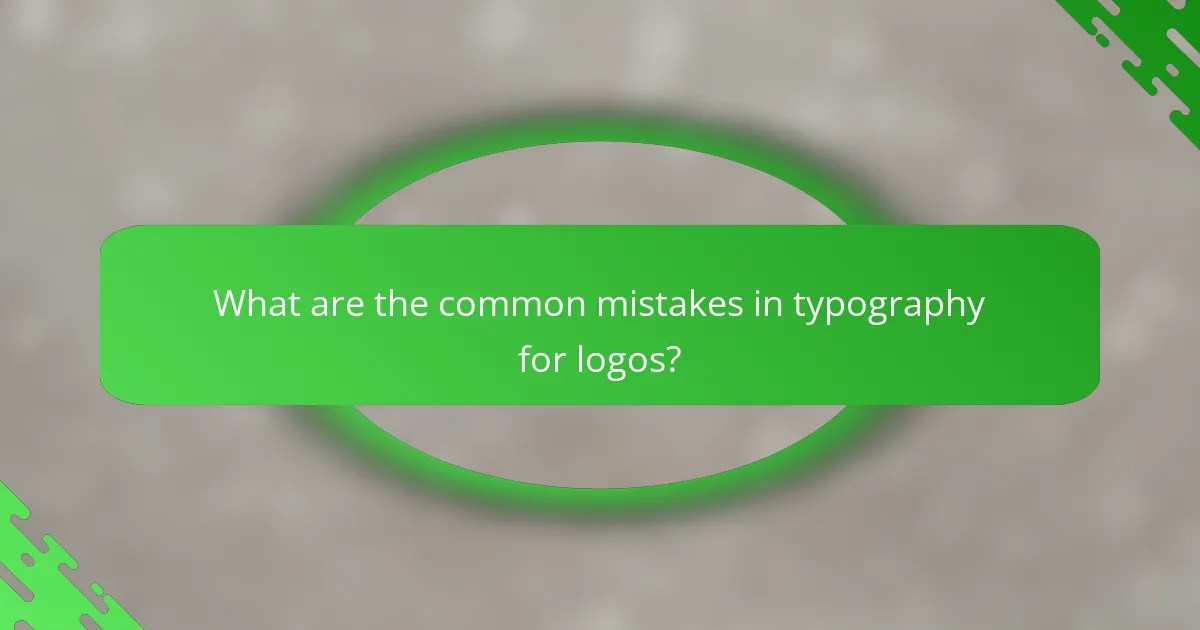
What are the common mistakes in typography for logos?
Common mistakes in typography for logos include poor font selection, lack of readability, and neglecting visual hierarchy. These errors can undermine a brand’s identity and make it difficult for audiences to connect with the message.
Overly complex font choices
Using overly complex fonts can detract from a logo’s effectiveness. Fonts that are too intricate may confuse viewers or become illegible at smaller sizes, which is crucial for branding across various platforms.
When selecting a font, aim for simplicity and clarity. A good rule of thumb is to choose fonts that maintain readability even when scaled down, such as sans-serif or clean serif options. Avoid decorative fonts that may look appealing but can hinder brand recognition.
Consider testing your font choices in different contexts, such as on business cards or websites, to ensure they convey the desired brand voice without compromising legibility. A straightforward font can often communicate professionalism and trustworthiness more effectively than an elaborate design.
